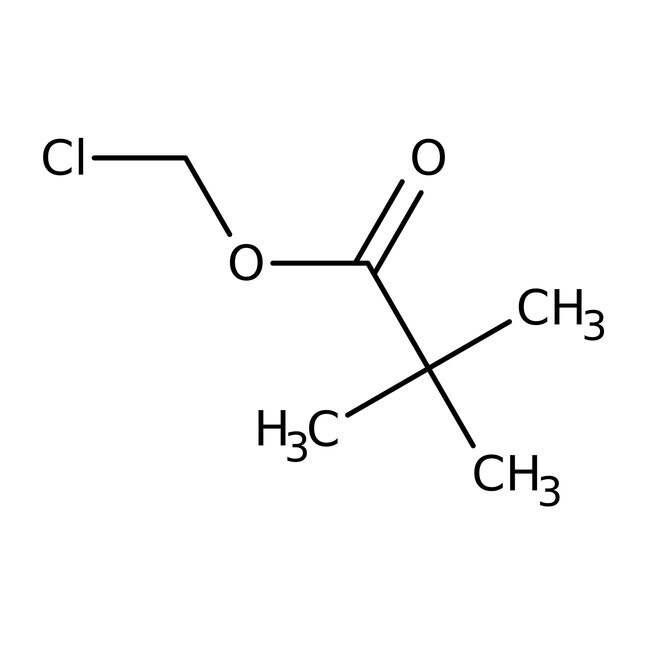Search Thermo Fisher Scientific
Chloromethyl pivalate, 97%, Thermo Scientific Chemicals



Chloromethyl pivalate, 97%, Thermo Scientific Chemicals
Chemical Identifiers
Specifications
Description
This Thermo Scientific Chemicals brand product was originally part of the Alfa Aesar product portfolio. Some documentation and label information may refer to the legacy brand. The original Alfa Aesar product / item code or SKU reference has not changed as a part of the brand transition to Thermo Scientific Chemicals.
Chloromethyl pivalate acts as an intermediate in the synthesis of active pharmaceutical ingredients. It is also involved in the acylation reaction with 9-(2-phosphonylmethoxyethyl)adenine. It serves as a protecting reagent used for the N-protection of amines. It is also employed in the preparation of pivaloyloxy methyl ester of ofloxacin as a prodrug. Further, it is used to prepare sulbactam pivoxil by reaction with sodium salt of sulbactam. In addition to this, it is used as a reagent during the synthesis of an isoindoline-annulated and continuous-flow organic synthesis.
Solubility
Miscible with most organic solvents. Immiscible with water.
Notes
Incompatible with strong oxidizing agents.
Figures
Documents & Downloads
Certificates
Frequently asked questions (FAQs)
Citations & References
Safety and Handling
Classification of the substance or mixture
CLP classification - Regulation(EC) No 1272/2008
Label Elements
Signal Word
Danger
Hazard Statements
H314 - Causes severe skin burns and eye damage
Physical Hazards
H226 - Flammable liquid and vapor
Precautionary Statements
P210 - Keep away from heat, hot surfaces, sparks, open flames and other ignition sources. No smoking
P280 - Wear eye protection/ face protection
P301 + P330 + P331 - IF SWALLOWED: rinse mouth. Do NOT induce vomiting
P305 + P351 + P338 - IF IN EYES: Rinse cautiously with water for several minutes. Remove contact lenses, if present and easy to do. Continue rinsing
P310 - Immediately call a POISON CENTER or doctor/physician